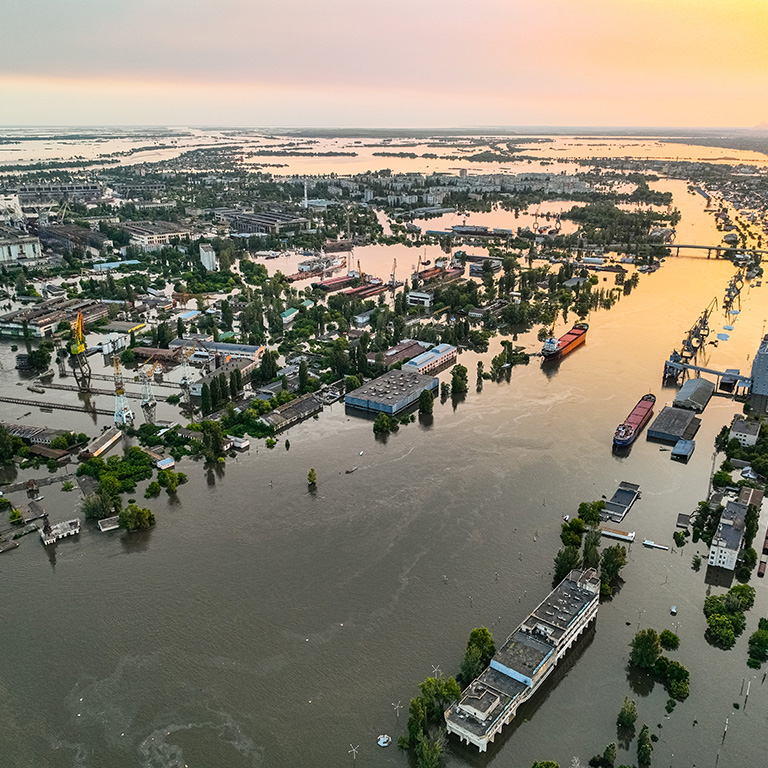
By Amy Barnes ,
Global Head of Energy & Power, Marsh
18/01/2023 · 3 minute read
Alongside the impacts of climate change and mounting geopolitical and geoeconomic challenges, the accelerating pace of technological change has been one of the major factors reshaping the business environment in recent years.
The agenda for this year’s World Economic Forum in Davos recognises its importance with the theme “Addressing the Current Industry Headwinds in the context of a New System for Harnessing Frontier Technologies for Private Sector Innovation and Resilience”. It comes after a year of developments in frontier technologies that are both exciting and alarming.
While artificial intelligence and automation have been disrupting industries for many years, the pace of change stepped up in 2022 with OpenAI’s release to the public of its ChatGPT tool. An example of generative AI – alongside image generators such as Dall-E – the chatbot made clear to all how powerful large language models have become.
It is not yet clear what kind of tasks such tools will be able to take over from humans – either in part or in whole – or exactly how they will affect the skills needed by people whose jobs involve working with words or images. It is clear, however, that further breakthroughs in generative AI will have a major impact on how the shape of the modern workforce evolves, and companies will need to balance the risks and rewards to remain competitive.
The last year also demonstrated the huge potential of frontier technology to contribute to mitigating climate change and enabling companies to meet their ESG commitments – an increasingly salient consideration as disclosure requirements become ever more stringent. While the energy crisis of 2022 saw greater use of fossil fuels in the short term, it also provided new impetus for pushing forward the development of renewables.
The last year saw a number of promising breakthroughs, ranging from new methods to turn water into hydrogen and produce renewable hydrogen at scale, to advances in the efficiency of solar panels and a potentially significant moment in research into fusion power.
In a challenging global context, these breakthroughs provide grounds for optimism – as does the momentum that is emerging to form the kind of partnerships that will be needed to continue driving the green transition forward. While the COP27 climate conference elicited mixed reactions overall, for example, everyone was pleased to see the announcement of a new Loss and Damage Fund.
For the insurance industry, the promise of extra availability of funds for lower-income countries to build capabilities in areas such as early warning systems can potentially open up new opportunities to reach new markets with valuable tools for risk management.
In November 2022, meanwhile, the World Economic Forum’s First Movers Coalition pledged USD 12 billion to support green tech. The Coalition aims to use demand commitments to stimulate the development of new technologies, and speed up the pace at which they are scaled. The focus is on heavy industry – such as steel, aluminium, and cement – and long-distance transport, sectors which together are responsible for 30% of global emissions.
New technologies create new risks as well as opportunities. For example, 2022 saw a sharp rise in cyberattacks by nation states on the critical infrastructure of other nations. The annual cost of cybercrime is also growing, and projected to top USD 10.5 trillion by 2025.
The newly published Global Risks Report ranks cyber risks highly in both the short and long term. Organisations must try to harness the potential of innovations while protecting their intellectual property and data, and also engage in collaboration with peers, insurers, and governments to maintain the safety of systems as a whole. Cybersecurity awareness needs to be an integral part of resilience.
If 2023 brings with it innovations on the same scale as the past year, business leaders gathered at Davos this week will have plenty more risks and rewards to weigh.

Report,Featured insight
19/09/2025

Article,Featured insight
15/09/2025